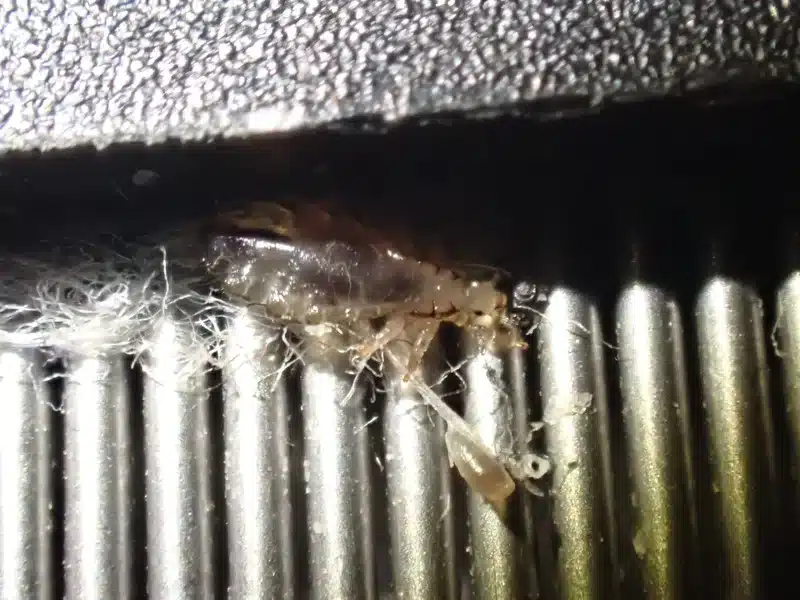Many people worry about finding fleas in their hair, especially when they wake up with itchy bites around their head and neck. The good news is that fleas rarely stay in human hair for extended periods. While they might jump into your hair to take a quick blood meal, they don’t set up camp there like they do on your pets.
After four years as a registered technician and being part of a family business that’s served the DMV area for over 50 years, I’ve seen plenty of cases where homeowners thought they had fleas living in their hair. Most of the time, the real problem was actually with their pets or home environment, not their scalp.
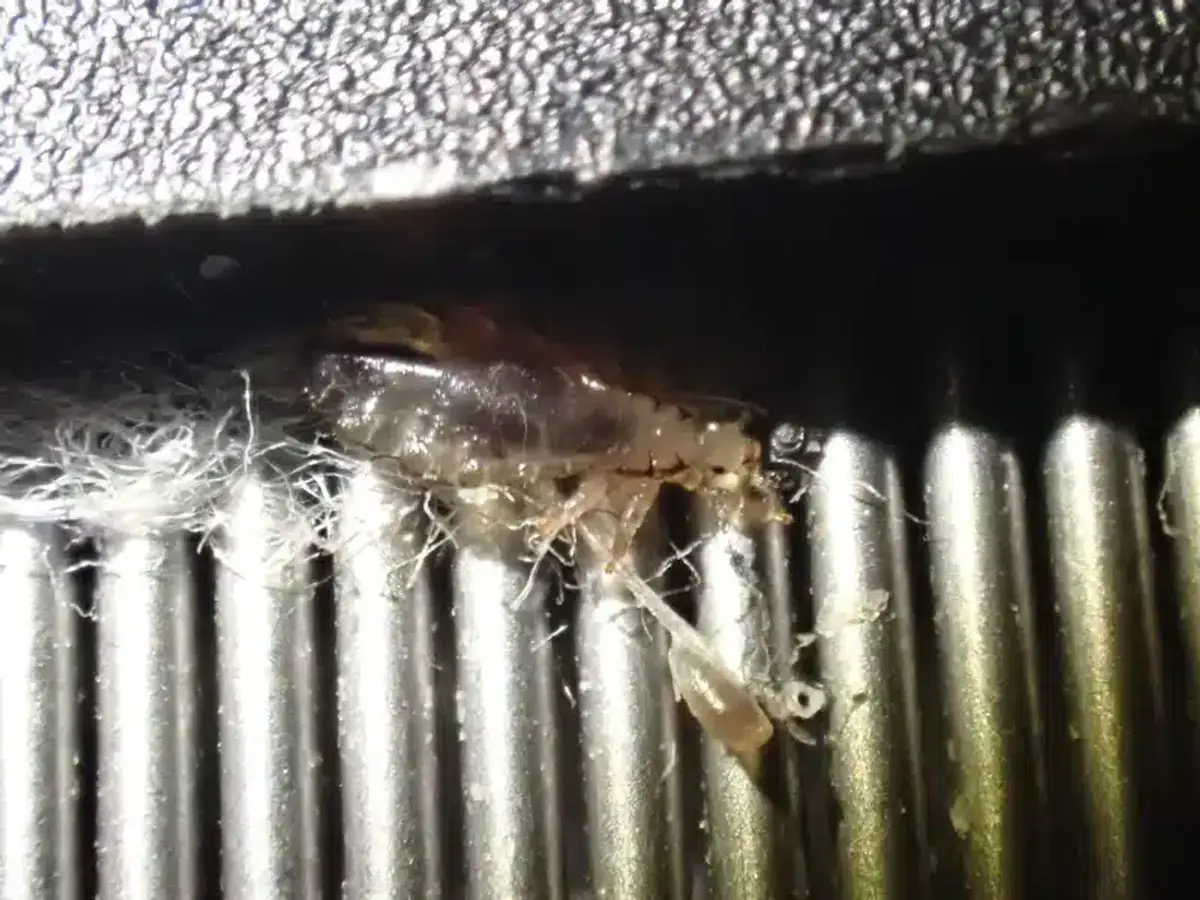
Why Fleas Don’t Live in Human Hair
Fleas are what we call “nest parasites.” They need specific conditions to survive and reproduce that human hair simply doesn’t provide. Unlike your dog or cat’s thick fur, human hair doesn’t offer the right environment for fleas to thrive.
What does the science say?
According to the University of Florida’s entomology department, fleas need humidity levels of at least 75% and dense fur to hide from grooming and environmental threats. Your scalp’s temperature, the way human hair grows, and regular washing make it nearly impossible for fleas to complete their life cycle there. Research shows that adult fleas that fall off their host usually die within 24 hours without finding another suitable host.
Fleas require specific environmental conditions that human hair simply cannot provide. The combination of lower humidity, regular washing, and different hair structure makes human scalp an unsuitable environment for flea reproduction and survival.
Quick Fact
Unlike pet fur which provides perfect hiding spots and humidity, human hair lacks the density and environmental conditions that fleas need to complete their 14-day life cycle from egg to adult.
How Fleas End Up in Human Hair
Even though fleas don’t live in human hair, they can definitely end up there temporarily. In my experience treating homes throughout Virginia, Maryland, and DC, I’ve found several common situations that lead to fleas jumping into people’s hair.
Sleeping with Infested Pets
The most common way fleas get into human hair is when you sleep with heavily infested pets. Fleas are attracted to carbon dioxide and body heat, which naturally draws them toward your head area during the night. They might jump from your pet directly onto your hair or pillow.
Handling Infested Items
Fleas also jump into hair when you’re cleaning up infested areas. Handling pet bedding, vacuuming carpets, or moving furniture in flea-infested rooms can disturb resting fleas and cause them to jump upward toward your head and shoulders.
Outdoor Exposure
Sometimes fleas jump onto people from outdoor environments. Tall grass, abandoned animal dens, or areas where wildlife congregates can harbor flea populations that might temporarily latch onto humans passing through.
Signs of Fleas in Human Hair
If you suspect you might have fleas in your hair, there are specific signs to look for. The bites are usually the first indicator, followed by actually spotting the insects themselves.
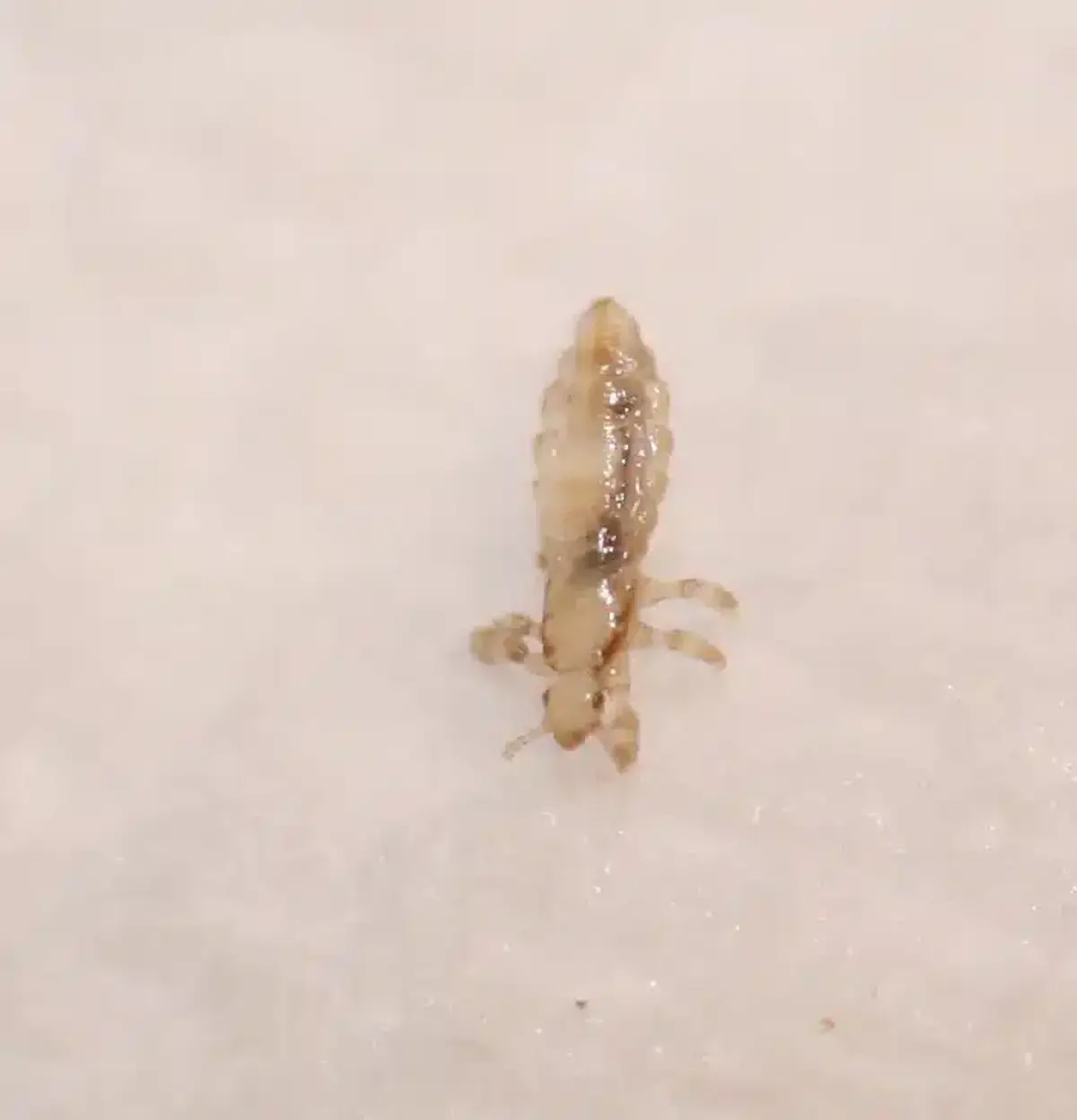
Bite Patterns and Symptoms
Flea bites on the scalp typically appear as small, itchy red bumps about 2-4 millimeters in size. They often occur in clusters or linear patterns that pest control professionals sometimes call the “breakfast, lunch, dinner” pattern. The National Center for Biotechnology Information notes that flea bites usually have a small hemorrhagic center and can cause intense itching.
Unlike typical flea bites around your ankles, scalp bites might be more noticeable because the area is more sensitive. Some people develop allergic reactions that can lead to larger welts or even secondary bacterial infections from scratching.
Key Identification Signs
- Bite Pattern: Small red bumps in clusters or lines, often called “breakfast, lunch, dinner” pattern
- Location: Typically around hairline, behind ears, and nape of neck
- Movement: Dark specks that jump when disturbed (unlike lice which crawl)
- Flea Dirt Test: Dark debris that turns reddish when water is added
How to Check for Fleas in Your Hair
If you think you might have fleas in your hair, here’s a step-by-step method I recommend to my customers for checking thoroughly:
- Prepare your workspace: Drape a white towel over your shoulders and position yourself over a light-colored sink or bathtub
- Section your hair: Separate your hair into 1-inch sections, working systematically from one side to the other
- Use a fine-toothed comb: Run a metal lice or flea comb from your scalp to the tips of each section
- Check the comb: After each section, tap the comb on the white towel and look for fast-moving dark specks
- Test suspicious debris: Add a drop of water to any dark specks - flea dirt (digested blood) will dissolve and turn reddish, while other debris won’t
The key difference is movement - if you see something jump, it’s likely a flea. Other hair parasites like lice crawl and cling to hair shafts rather than jumping away.
Fleas vs Other Hair Parasites
Many people confuse fleas with other common hair parasites. Understanding these differences helps you identify what you’re actually dealing with and choose the right treatment approach.
| Fleas | Head Lice | |
|---|---|---|
| Size | 3-4mm (larger) | 2-3mm (smaller) |
| Movement | Jump away when disturbed | Crawl and cling to hair |
| Eggs | Drop loose eggs in environment | Cement nits to hair shafts |
| Hair Survival | Temporary (under 24 hours) | Complete life cycle on scalp |
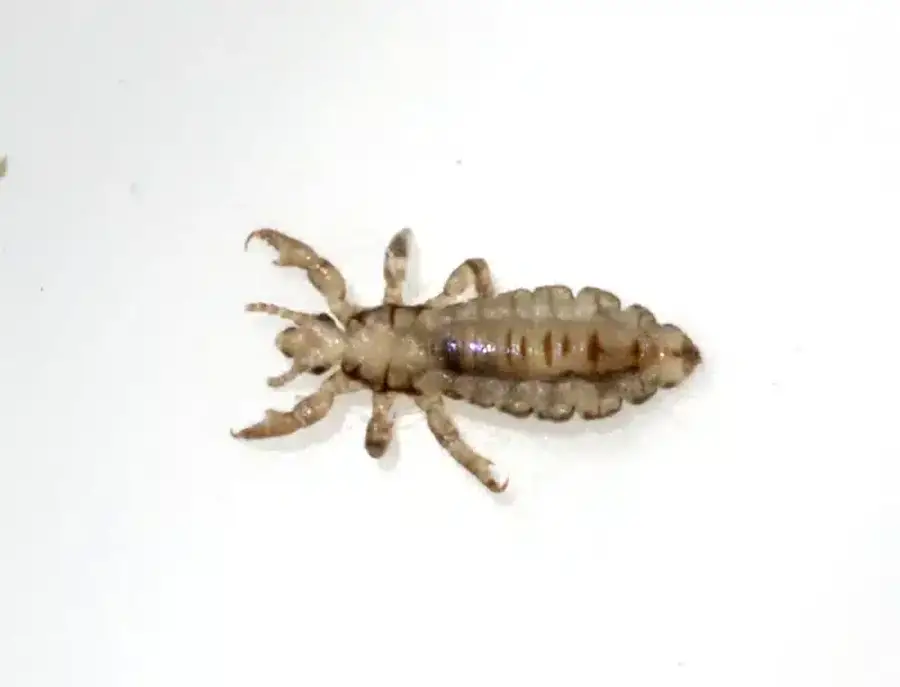
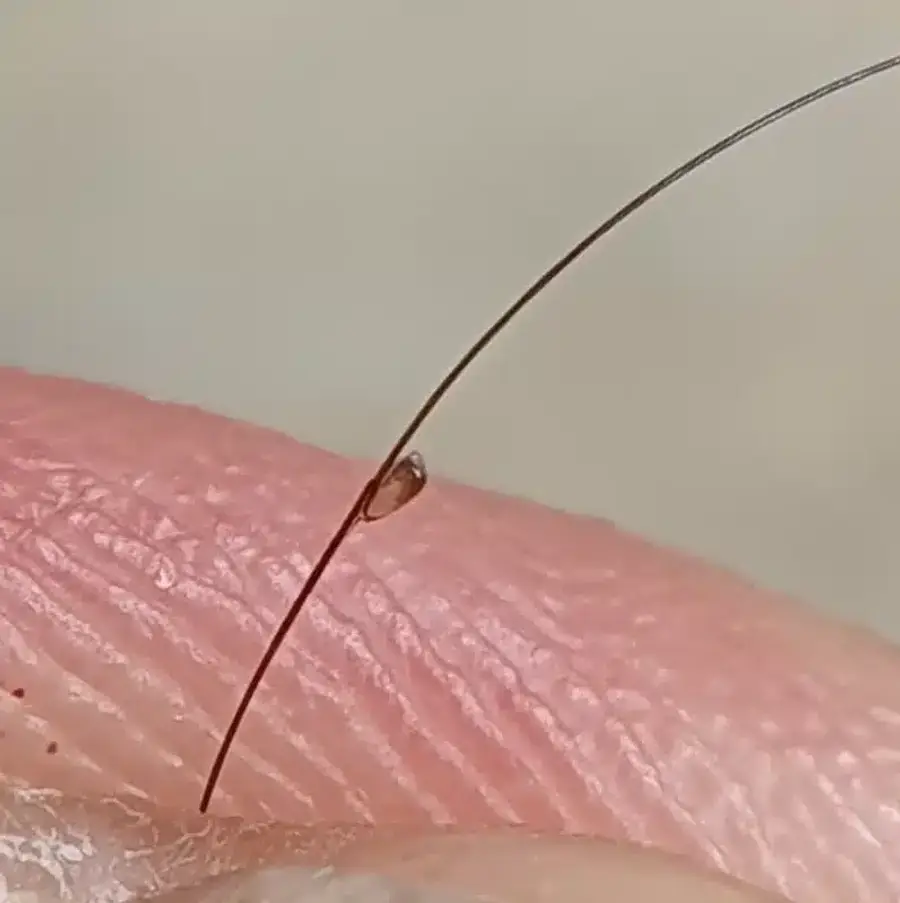
Head Lice Differences
Head lice are smaller than fleas, measuring only 2-3 millimeters. They’re dorsoventrally flattened and specifically adapted to cling to human hair shafts. Unlike fleas, lice spend their entire life cycle on humans and lay visible, oval eggs called nits that are cemented to hair strands.
The itching from lice tends to be continuous, while flea bite itching comes in waves. Most importantly, lice crawl rather than jump, making them easier to spot during inspection.
Other Microscopic Parasites
Demodex folliculorum mites are microscopic, cigar-shaped parasites that live in hair follicles. They’re usually asymptomatic but can be linked to certain skin conditions. These mites are too small to see without magnification, unlike fleas which are clearly visible to the naked eye.
Scabies mites typically burrow in thin skin areas and rarely affect the scalp except in infants or elderly patients with compromised immune systems.
Health Concerns from Fleas in Hair
While fleas don’t typically establish populations in human hair, even temporary contact can pose some health risks that homeowners should understand.
Allergic Reactions
Some people develop allergic reactions to flea saliva, leading to a condition called pulicosis. This can cause papular urticaria or even generalized rashes in sensitive individuals. The scratching from intense itching can also lead to secondary bacterial infections.
Disease Transmission
According to the Centers for Disease Control and Prevention, fleas can transmit several diseases to humans. Cat fleas, which are the most common species in Mid-Atlantic homes, can carry Bartonella henselae (cat-scratch disease) and Rickettsia felis.
In rare cases, fleas can also transmit murine typhus and even tapeworms if an infected flea is accidentally swallowed, which sometimes happens with small children.
Removing Fleas from Human Hair
If you do find fleas in your hair, the removal process is actually quite straightforward. The key is understanding that treating just your hair won’t solve the underlying problem.
Immediate Hair Treatment
Start with a thorough shampoo using regular detergent-based shampoo or even mild dish soap. The CDC recommends this approach because detergents break down the waxy coating on fleas’ bodies, effectively killing them.
After shampooing, use a fine-toothed flea or lice comb to remove any remaining fleas or flea dirt. Continue daily combing until you don’t detect any fleas or flea debris for at least three consecutive days.
Unlike with lice, you typically don’t need specialized pediculicides for fleas in hair. The combination of washing and combing is usually sufficient because fleas can’t survive regular hair washing routines.
Treating Secondary Issues
If you’ve developed itchy bite welts or secondary infections from scratching, you can treat these with over-the-counter remedies. A 1% hydrocortisone cream can help reduce inflammation, while antiseptic treatments can prevent bacterial infections in scratched areas.
Addressing the Real Problem: Your Home Environment
Here’s the crucial point that many homeowners miss - finding fleas in your hair is almost always a symptom of a larger flea infestation in your home. The real solution involves treating your pets and environment, not just your hair.
Pet Treatment is Essential
Every dog and cat in your home needs concurrent treatment with veterinary-approved flea control products. Modern treatments like isoxazolines or monthly topicals are much more effective than the flea shampoos and sprays of the past.
Without treating your pets, you’ll continue to have fleas jumping into your hair no matter how often you wash it. The pets are where fleas complete their life cycle and reproduce.
Environmental Control
Our company follows the CDC’s four-step protocol for environmental flea control. First, we focus on sanitation - hot-washing all bedding and thoroughly vacuuming carpets, disposing of vacuum bags outside immediately.
Next comes treating the indoor environment. We use products like Alpine and Essentria that target both adult fleas and disrupt the development of eggs and larvae. For severe infestations, outdoor treatment might also be necessary.
The process typically takes 2-3 months for complete eradication because you’re dealing with multiple generations of fleas in different life stages. This is why finding fleas in hair requires a comprehensive approach rather than just treating the person.
Prevention Strategies for DMV Homeowners
Living in the Mid-Atlantic region presents unique challenges for flea control. Our humid summers accelerate flea development, while year-round indoor heating allows reproduction even in winter.
Pet Prevention
Keep all pets on continuous flea prevention programs throughout the year. Many homeowners make the mistake of stopping treatments in winter, but heated homes provide perfect conditions for flea reproduction regardless of outdoor temperatures.
Regular grooming and inspection of your pets helps you catch flea problems early, before they become severe enough to result in fleas jumping onto family members.
Environmental Management
Reduce wildlife attractions around your property by securing garbage, removing standing water, and maintaining your lawn. Opossums, raccoons, and rodents all carry flea populations that can spill over to your pets.
During our humid summer months from June through September, increase your vacuuming frequency and pay special attention to areas where pets spend time. The combination of heat and humidity in this region can reduce the flea life cycle to just 18 days.
Indoor Humidity Control
Since fleas need humidity levels above 75% to reproduce successfully, maintaining lower indoor humidity can help discourage infestations. This is especially important in basements and crawl spaces where pets might spend time.
For comprehensive flea control strategies, check out our guide on how to get rid of fleas in house for both DIY and professional solutions.
When to Call Professional Help
While you can handle minor flea problems with thorough cleaning and pet treatment, some situations require professional intervention. If you’re still finding fleas in your hair after treating your pets and cleaning your home, or if the infestation seems overwhelming, it’s time to call in experts.
Our registered technicians can identify the specific flea species in your home, locate breeding sites you might have missed, and apply targeted treatments that break the reproduction cycle more effectively than over-the-counter products.
We’ve also removed nine of the industry’s harshest chemicals from our treatment programs, using alternatives like Sentricon and borate-based solutions that are easier on your family while still being effective against fleas.
If you’re dealing with persistent flea problems or want to learn more about whether fleas can live in human hair, don’t hesitate to reach out. We’re here to help you get back to enjoying your home without worrying about these jumping pests.
Remember, successful flea control requires treating the whole problem - pets, environment, and any temporary issues like fleas in hair. With the right approach, you can eliminate fleas from your home and prevent them from coming back.
If you have any questions about flea control or need an estimate for treatment, call us at 703-683-2000 or email us at info@bettertermite.com. Our experienced team is ready to help you solve your flea problems for good.
Frequently Asked Questions
Can fleas live and reproduce in human hair?
+
No, fleas cannot complete their life cycle in human hair. While they might jump into your hair to take a blood meal, they need the dense fur of animals and specific humidity conditions to survive and reproduce. Human hair doesn't provide the right environment for flea eggs to develop or adults to hide from grooming.
How can I tell the difference between fleas and lice in my hair?
+
The main differences are size, movement, and eggs. Fleas are larger (3-4mm), dark brown or black, and jump when disturbed. Lice are smaller (2-3mm), grayish, crawl rather than jump, and lay visible nits cemented to hair shafts. If you add water to debris from combing, flea dirt will dissolve and turn reddish while lice debris won't change color.
What should I do immediately if I find fleas in my hair?
+
Wash your hair thoroughly with regular shampoo or mild dish soap, which kills fleas by breaking down their protective coating. Use a fine-toothed comb to remove any remaining fleas or debris. However, the most important step is treating your pets and home environment, as hair fleas are usually a sign of a larger infestation.
Why do I keep getting flea bites on my head and neck?
+
Head and neck flea bites usually happen when you sleep with infested pets or handle flea-infested items. Fleas are attracted to carbon dioxide and body heat, which draws them toward your head area. The real solution is treating your pets with veterinary-approved flea control and addressing the home environment.
Are there health risks from fleas in human hair?
+
While fleas don't establish permanent populations in human hair, they can still pose health risks. Flea bites can cause allergic reactions, and scratching can lead to secondary bacterial infections. Fleas can also transmit diseases like cat-scratch disease and murine typhus, though this is relatively rare in residential settings.
Do I need special shampoo to remove fleas from hair?
+
No, regular detergent-based shampoo or even mild dish soap is effective at killing fleas in hair. Unlike lice, fleas can't survive routine washing, so specialized pediculicides are usually unnecessary. The key is thorough washing followed by combing with a fine-toothed flea comb to remove any remaining debris.
How long can fleas survive in human hair?
+
Fleas typically survive less than 24 hours in human hair without returning to a suitable animal host. They may take a blood meal from your scalp, but the conditions in human hair - including temperature, humidity, and regular grooming - make it impossible for them to establish a lasting population.
Will treating just my hair solve a flea problem?
+
No, treating only your hair won't solve the underlying flea problem. Fleas in human hair are almost always a symptom of pet or environmental infestation. You need to treat all pets with veterinary-approved flea control, vacuum and clean infested areas, and potentially use professional pest control treatments to break the flea life cycle completely.
With five years of hands-on experience in the pest control industry, George Schulz is a registered technician with the Virginia Pest Management Association and a proud third-generation professional in a family business that's been protecting homes for over 57 years. He manages and trains a team of service pros while also leading internal research efforts—recently spearheading a deep-dive review of thousands of documents on pest control materials to hand-pick the most kid and pet friendly, most effective solutions tailored specifically for homes in the DC metro area.
